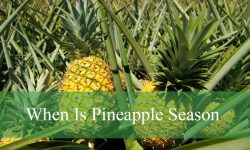All types of cilantro plants have leaves and seeds. But some cilantro varieties are known for producing more leaves or seeds than the others. Cilantro plants are native to Southern Europe, North Africa, and Western Asia.
The plant was first cultivated in 2000BC in the hanging gardens of Babylon. It was also the most popular spice in the ancient Greece and Egypt. Most Cilantro species started spreading in North America in the 16th C.
All parts of cilantro plants are edible since they have culinary and medicinal benefits. I often consume seeds and leaves due to their excellent flavors. We wrote this comprehensive guide to highlight different types of cilantro plants.
Different Types of Cilantro with Pictures
Choosing the best type of cilantro plant for your edible garden can be a daunting experience. Here is a list 15 different types of cilantro plants with their respective pictures and growing description:
Culantro
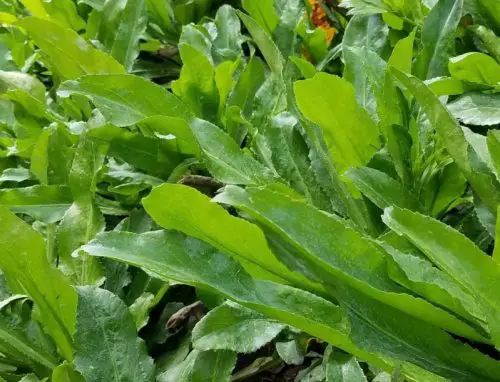
Culantro species are native to the tropical regions of Americas and West Indies. The rich flavors make it ideal for culinary usage and medicinal properties for relieving pain.
Native Jamaicans use the herb to treat cold and convulsions among children. The plant has a stronger smell than other cilantro varieties and thrives well in summer.
Culantro is also called black beny, spiny coriander, spiritweed, and saw leaf herb. It is commonly used in preparation of Mexican dishes like soup, stew, and chorizo.
Scientific Name |
Eryngium foetidum |
Identification Features |
Small dark green lance-shaped long leaves that resemble rosette. |
Taste |
More potent and soapy flavor. |
Indian Summer Cilantro

It is also known as summer coriander and hails from India. The cilantro species is quite rare and takes about two years to complete its life cycle.
The Indian summer cilantro is vulnerable to pest infestation and grows up to 2.5ft tall. It adds flavor to Tikki or Indian snack and make it delicious.
Scientific Name |
Coriandrum sativum |
Identification Features |
Mound-like shape rounded leaves |
Taste |
Tasty, sugary, and slightly citrus |
Leaf Cilantro
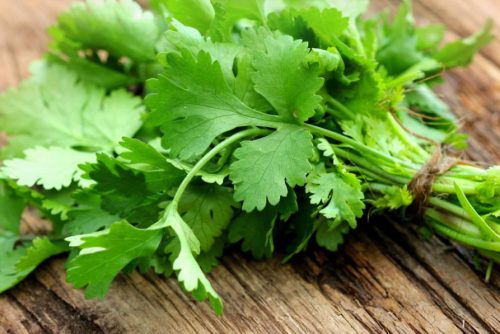
The cilantro species resemble the parsley due to the flat toothed leaves. The spicy tastes from the leaves bring calmness and perfect option for meat or pickles marinating.
You can use the seeds from leaf cilantro to make bread, pastries, and curry powder. It is a slow-growing plant and does not shed leaves.
I prefer adding the cilantro to the chicken soups and foods for Mexico, Asia, and Caribbean. Add crushed seeds to the stews or cookies to enhance the taste.
Scientific Name |
Coriandrum sativum |
Identification Features |
Leafiness and 24inches delicate stems |
Taste |
Leaves are sweet with strong and sharp scent. Seeds are spicy with nutty and citrus flavors. |
Mexican Cilantro
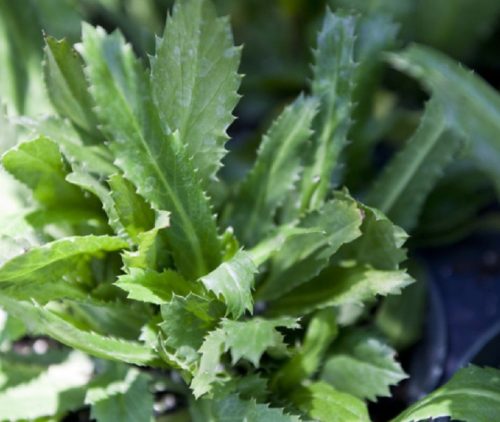
The Mexican coriander plants are native to Mexico and parts of Central America. Its leaves are mainly used in Mexican dishes.
The small white flowers and long thin leaves are the distinctive features. The strong aroma and serrated leaves are other features for easy identification.
The citrus smell is my favorite flavors that make the cilantro species excellent for numerous culinary recipes in Latin America.
Scientific Name |
Eryngium foetidum |
Identification Features |
Small white flowers and long thin leaves with strong aroma and serrated margins |
Taste |
Citrus and soapy flavors |
Potluck Coriander
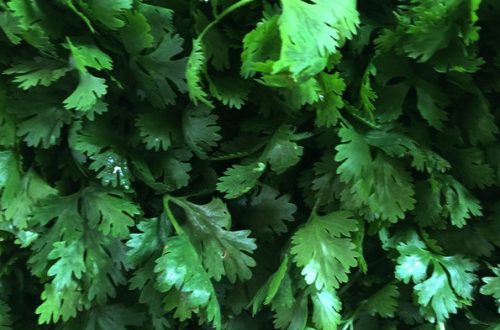
It is a versatile herb perfect for different dishes. Besides that, it is the easiest herb to grow and maintain compared to other cilantro species.
The strong smell from the slightly furry leaves is the distinctive features. The dark green and deeply lobed leaves set them apart from other coriander plants.
Scientific Name |
Coriandrum sativum |
Identification Features |
Dark green leaves that are deeply lobed with a slight furry touch. |
Taste |
Strong smell rich in slight lemon flavors |
Seed Coriander

It is a spice made from coriander seeds and mainly used in many Asian cuisines. These seeds are excellent source of antioxidants with numerous health benefits.
The medicinal properties help improve digestion, lower cholesterol levels, and boost the immune system. It can be used in cooking or as a garnish in curries, soups, and stir-fries.
Scientific Name |
Coriandrum sativum |
Identification Features |
Brown plant producing numerous seeds. |
Taste |
Strong pungent flavors |
Vietnamese Cilantro

Most people usually called this cilantro a Vietnamese coriander since it is native to Southeast Asian cuisines. The strong pungent flavors and aroma are real deal.
I often used Vietnamese cilantro as a garnish or add to soups, salads, and stir-fries. The long slender leaves and small white flowers are the conspicuous features.
Scientific Name |
Persicaria odorata |
Identification Features |
Flat leaves with oblong and pointed shape. The purple streak in the center is more prominent. |
Taste |
More spicy, peppery, and lemony |
Delfino Cilantro
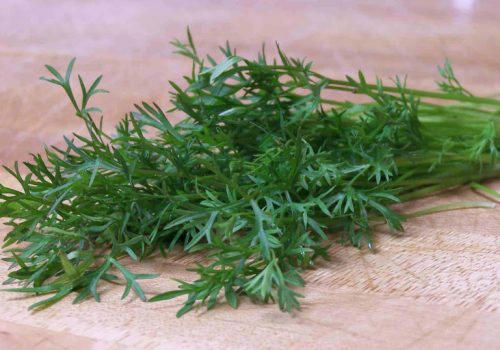
The cilantro type is mainly used as an herb and has numerous other names. The delfino cilantro plant is also called Mexican coriander, culantro, and Eryngium foetidum.
The strong flavors are the reason behind the many uses in dishes around Mexico, Central America, and the Caribbean.
Scientific Name |
Coriandrum sativum |
Identification Features |
Fern-like leaves |
Taste |
Strong parsley flavors with citrus |
Moroccan Coriander
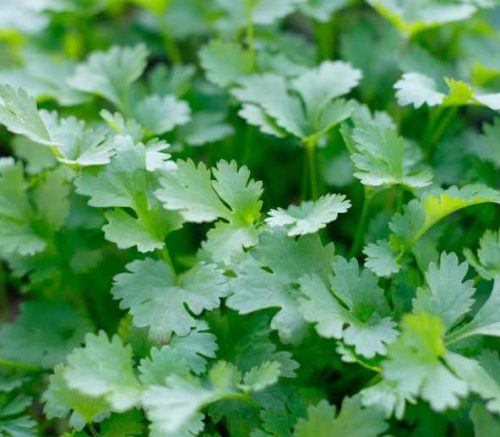
The coriander type is also called harissa and native to Tunisia. The species has small distinctive oval leaves for easy identification.
The strong smell with lemony flavors makes it the most valued herb in many Moroccan markets. The herb is compatible with many dishes and contains healthy components.
Scientific Name |
Coriandrum sativum |
Identification Features |
Short stems and small dark green oval leaves |
Taste |
Lemony and toasty notes |
Leisure Cilantro
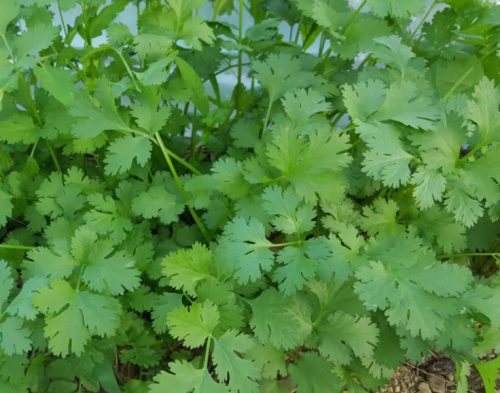
It is a type of herb often used in cooking due to its strong pungent flavors. It adds a lot of depth to many dishes regardless of the recipes.
It is also rich in vitamins and minerals ideal for improving the health. Leisure cilantro plant has small dark green leaves with strong scent.
The thin stems and white flowers are the additional distinctive features. I recommend growing the cilantro type in your kitchen garden due to its culinary and medicinal uses.
Scientific Name |
Coriandrum sativum |
Identification Features |
Feathery round and tender leaves. Bright green flower stalk in the center. |
Taste |
Zesty and aromatic flavors |
Santo Cilantro
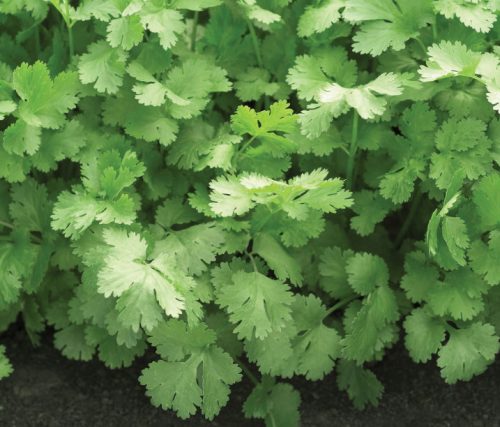
The cilantro variety is native to Mexico and also called Mexican coriander or cilantro. The fresh leaves are used in Mexican cuisines due to its strong flavors.
The soapy taste and strong scent is the reason behind its popularity in the Latin American cuisines. You can use the flowers for decoration or mixing with the salads.
Scientific Name |
Coriandrum sativum |
Identification Features |
Flat parsley-like leaves and fresh green |
Taste |
Sharp scent and fading flavors when cooked |
Caribe Cilantro
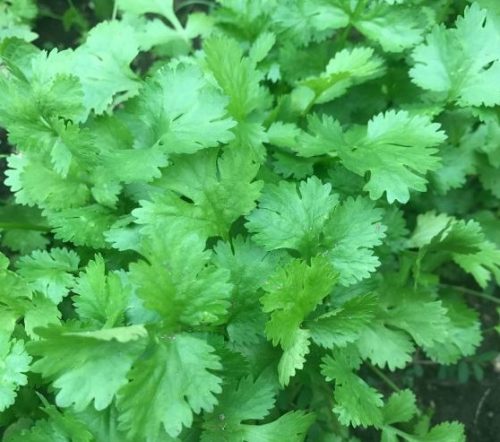
The type of cilantro is native to Caribbean with strong flavors and commonly used in Latin America cuisines. It is also called Cuban oregano, Jamaican Oregano or Mexican mint.
The cilantro species belong to the mint family and can be used while fresh or dried. If you have tasted Cuban dishes, you won’t miss its sweet flavors.
Scientific Name |
Coriandrum sativum |
Identification Features |
Dark green leaves and slightly thinner stem |
Taste |
Fairly sweet in both cooked and raw dishes |
Long-standing Cilantro
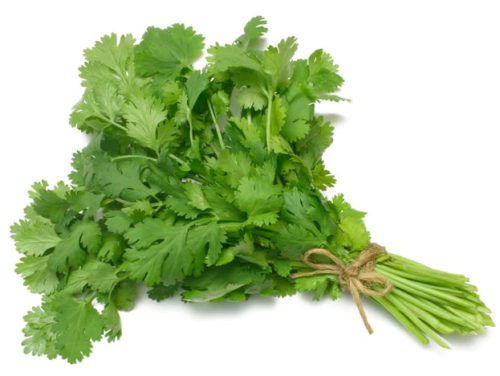
It is herb type with numerous culinary benefits compared to other cilantro species. The strong flavors make it ideal for cooked and raw dishes.
The long-standing cilantro is about 18-inches tall with a strong central stem. The dark green and deeply lobed leaves are the distinctive features.
The white or pale lavender flowers are the hidden features that help in identifying long-standing cilantro plant from a distant.
Scientific Name |
Coriandrum sativum |
Identification Features |
Leafiness and delicate stems of 24-inches tall. |
Taste |
Seeds have spicy and citrus flavors while leaves have sweet and strong scent. |
Slo-bolt Cilantro
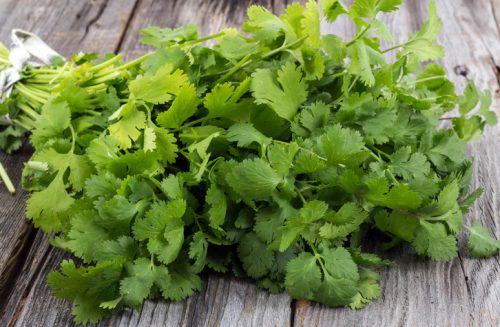
It is a cilantro species bred for its slower bolt or flower cycle. The herb is known for producing leaves for longer period before forming seeds.
The leaves are tender to make the citrus taste fresher in many curries in India and other Asian dishes. Crushed dry seeds provide spicy tastes in stews and soups.
Scientific Name |
Coriandrum sativum |
Identification Features |
Leafy green and slightly large leaves |
Taste |
Leaves have citrus note and seeds are more pungent. |
Calypso Cilantro
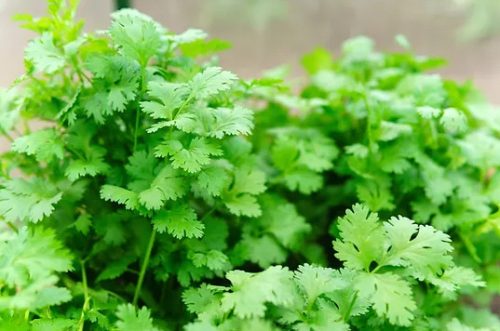
It is a cilantro type native to Caribbean with strong flavors ideal for many dishes. The medicinal properties help improve digestion and reduce inflammation.
The cilantro species is also rich in vitamin A and C suitable for body detoxification. I recommend adding this herb to your kitchen garden due to its flavors and nutrition.
Scientific Name |
Coriandrum sativum |
Identification Features |
Medium green with upright stems and wide uniform leaves. |
Taste |
Slight lemony and medium bitter |
You Might Also Like:






